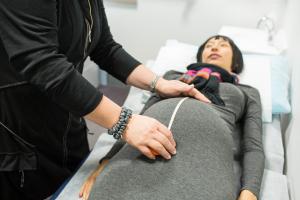Launched overnight in London, The Lancet says the series is the most critical, wide-reaching examination of midwifery ever conducted, produced by an international group of academics, clinicians, professional midwives, policymakers and advocates for women and children.
UTS's Professor Caroline Homer, the only Australian lead author in the series, headed a study estimating the number of deaths that could be averted in 78 countries if midwifery services were scaled up.
The Lancet says this and other papers in the series show the scale of the positive impact that can be achieved when effective, high-quality midwifery is available to all women and their babies. Apart from saving lives, it also improves their continuing health and wellbeing and has other long-lasting benefits.
New estimates produced for the series suggest that in the countries with the highest burden of infant and maternal deaths, over three quarters of stillbirths and maternal and newborn deaths could be prevented in the next 15 years if effective midwifery was available to all women. Even if improvements in the coverage of midwifery services were much more modest, the potential for saving lives is huge.
While most maternal and child deaths occur in low-income and middle-income countries, where lack of access to effective midwifery is the primary obstacle to improving mothers' and infants' health, the series also says that overmedicalisation of pregnancy is increasingly threatening the health and wellbeing of women and their families in both high-income and lower-income countries.
"Both underuse and overuse of medical interventions in pregnancy contribute to short and long-term illness for an estimated 20 million childbearing women," Professor Homer said.
"This not only affects their health and wellbeing, but may also result in their needing to pay for ongoing healthcare costs, and on the ability of their families to escape poverty."
The return on investment from the education and deployment of community-based midwives is thought to be similar to vaccination in terms of the cost per life saved. However, according to the series authors, the scale of the potential effect that increasing access to effective midwifery could have is yet to receive adequate international recognition.
Barriers to wider uptake of the effective midwifery practices include a lack of understanding about what midwifery can do, low status of women in society, interprofessional rivalries and unregulated private sector care for mothers' and infants' health.
To address these barriers, the series outlines a new framework describing the characteristics of care that women, babies and families need before, during, and after pregnancy.
For the first time, the framework addresses not just what must be done for women and their families during this period, but how it must be done, where and by whom.
The authors hope that as well as providing a blueprint for progress in improving midwifery care worldwide, the framework will also be used to evaluate success and to help build capacity in the countries most affected by maternal and infant deaths.












